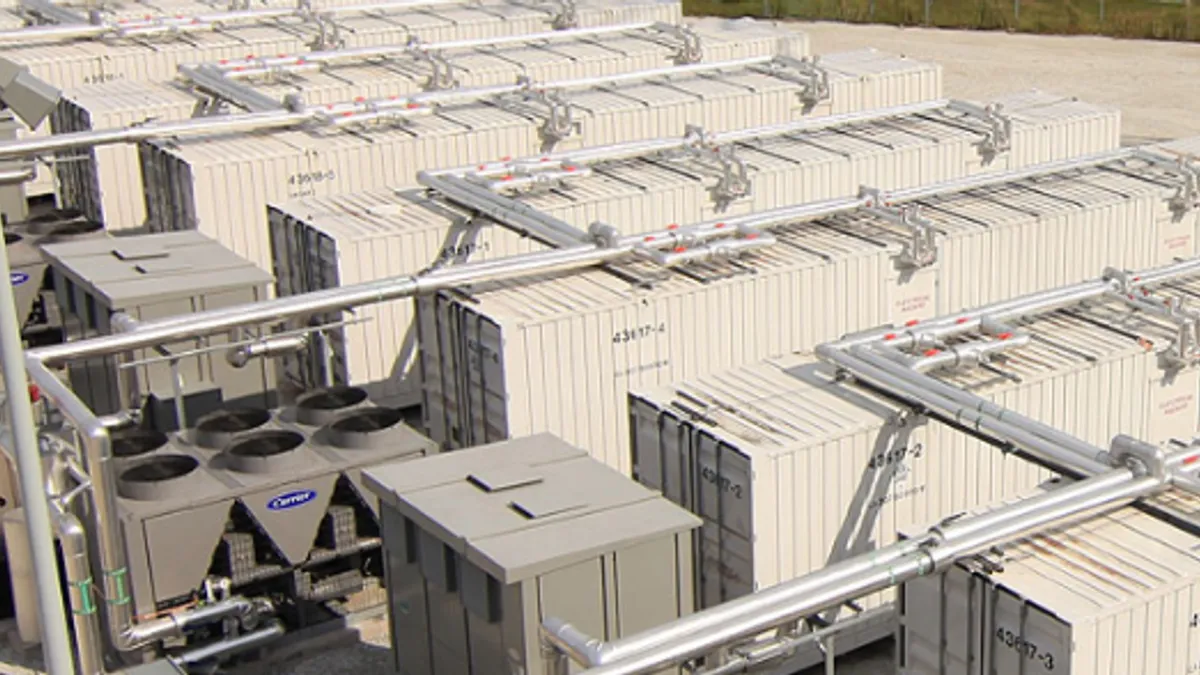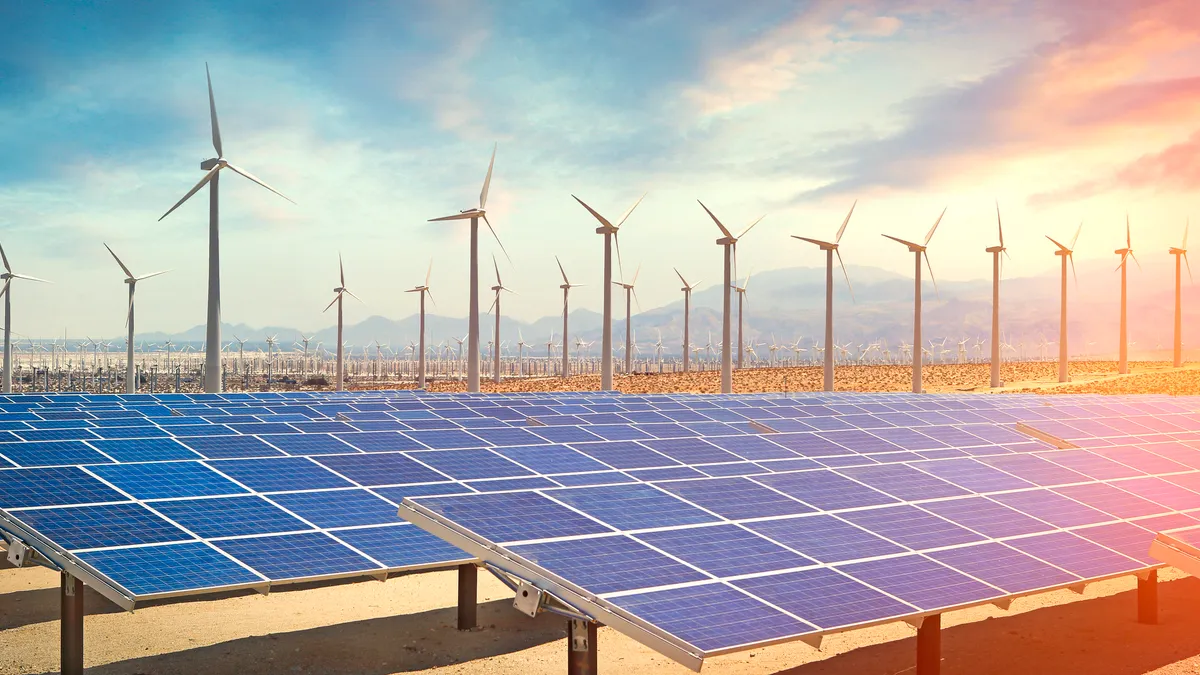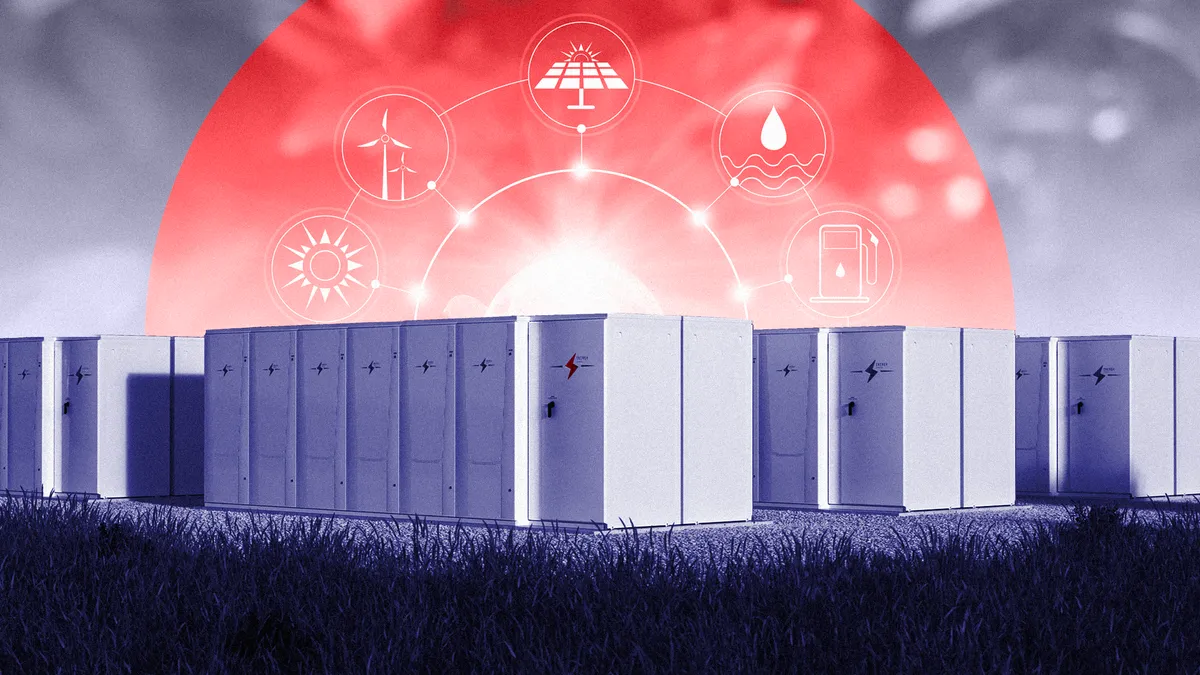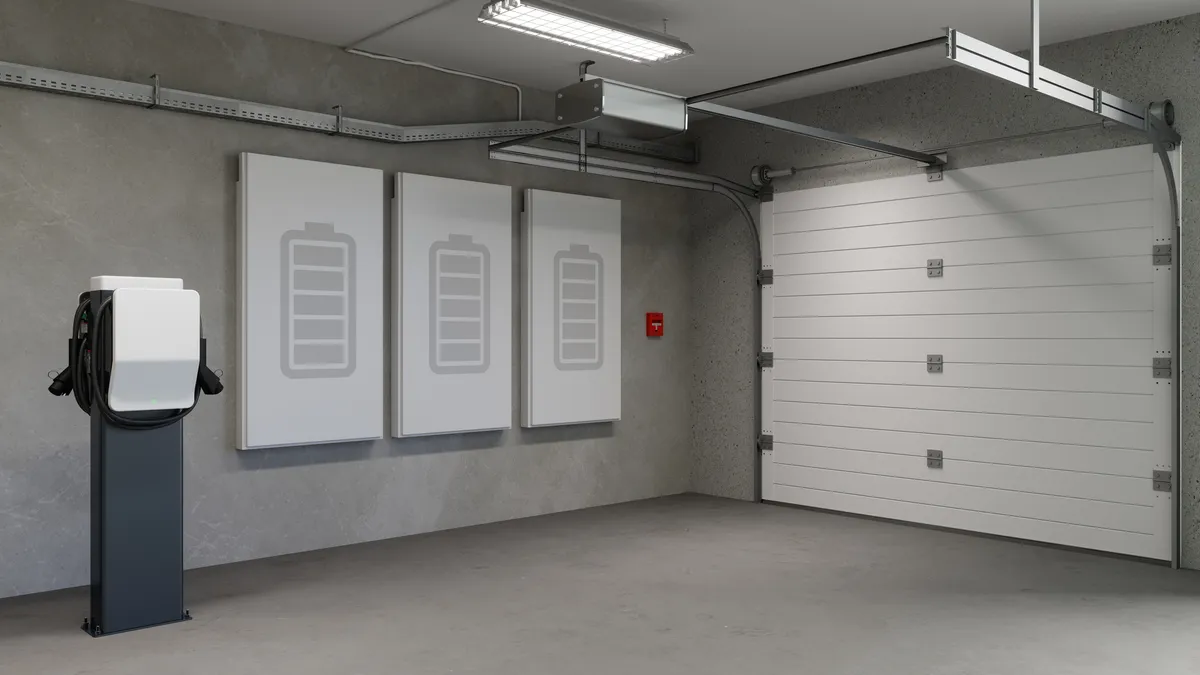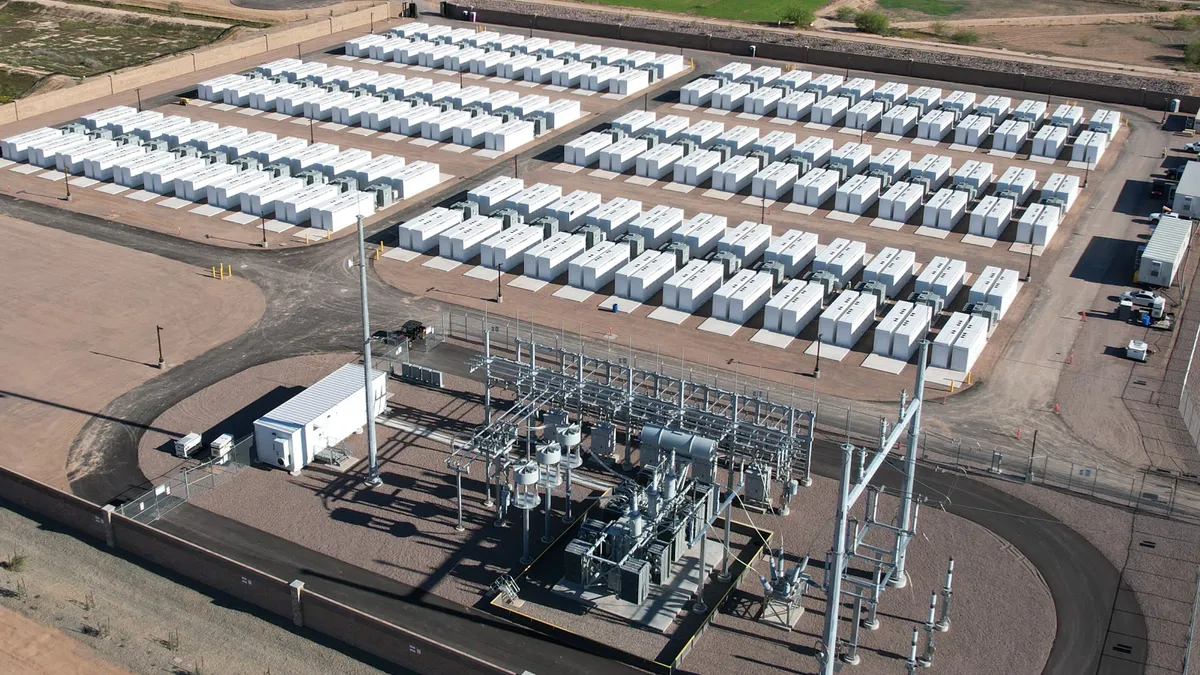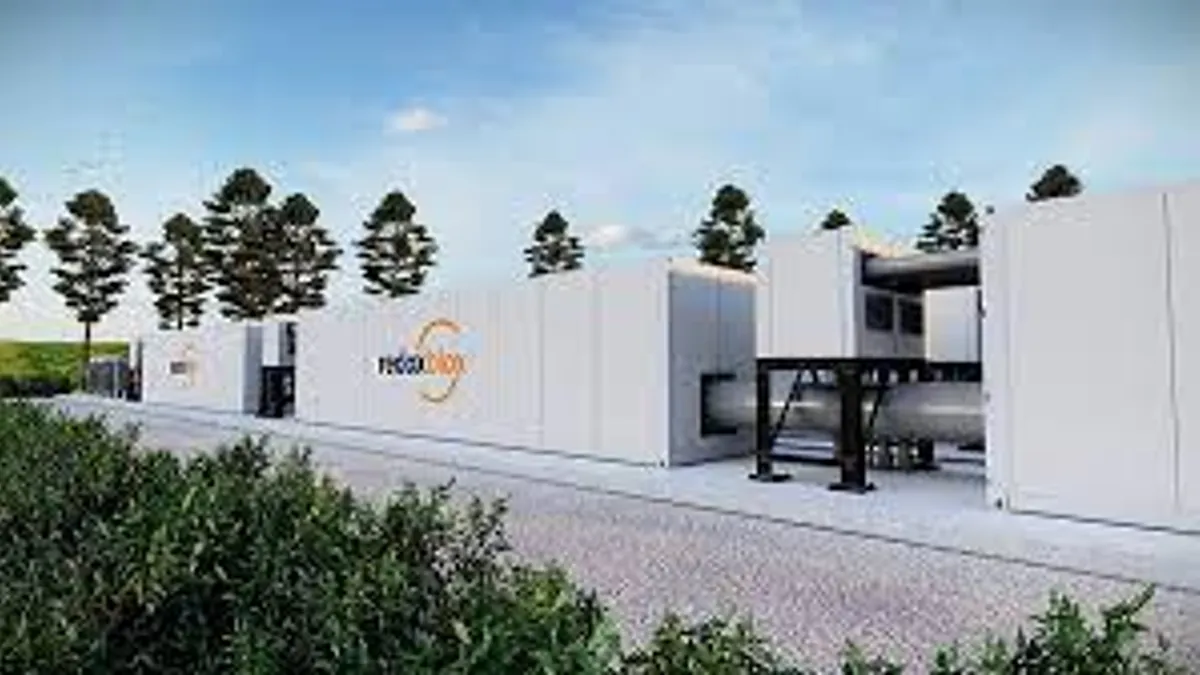It's a universal truth that a grid looking to integrate high levels of variable renewables must be in need of energy storage. Or something along those lines.
As solar and wind facilities come online and energy storage becomes more economical, storage projects are emerging across the U.S. with big implications for the technology’s future. Some states with ambitious renewables goals, such as California and Hawaii, are beginning to unlock booming markets for the resource.
To help our readers keep an eye on the growth of energy storage going into 2016, Utility Dive has compiled a list of five important storage projects to watch.
1. The biggest solar-plus-storage project on the mainland
A small Ohio town's solar+storage venture aims to be the biggest of its kind in the mainland U.S. when it's complete.
The municipal utility in Minster, Ohio, is working with developers Half Moon Ventures and S&C Electric to develop a 7 MW energy storage project next to a 4.2 MW solar farm that's owned by Half Moon. The project is composed of 3 MWh of lithium-ion batteries alongside a master control system and 2-MW/2.5-MVA power conversion systems.
The fact that a local municipal utility is developing the project, and not a bigger IOU, brings the project into the spotlight, according to Ravi Manghani, senior analyst for energy storage at GTM Research..
"We haven’t seen that many storage projects being deployed in [the] mainland U.S. by municipal utilities... to see municipal storage projects is interesting," he said. "[It's] probably first of its kind."
The utility hopes to use the project to manage demand during peak periods, provide reliable back-up power, and reduce their peak demand charges during the day. The project also aims to sell frequency regulation into PJM, a booming market for the service.
The utility is leveraging multiple value streams to make it economically viable, Manghani said.
“[The project] will be looking to capture multiple value streams,” Manghani told Utility Dive. “It’s been known in the industry [that] to make economics stand out, you need to capture multiple value streams or talk about value stacking.”
“Revenue stacking is one of the quickest ways to create a strong return on investments for energy storage systems,” Troy Miller, S&C's director of grid solutions, said in a statement.
If the project goes well, it could be a model for other municipal utilities looking to incorporate storage into their systems.
2. Leveraging DERs for the grid: ConEd's behind-the-meter project
With the recent proliferation of distributed energy resources in some states, many utilities are concerned about the impact on their grid operations. Now, New York’s ambitious Reforming the Energy Vision (REV) initiative seeks to harness DERs in an effort to modernize the grid, integrate clean energy, and ultimately lower costs for customers.
Consolidated Edison’s “Virtual Clean Power Plant," a demonstration project under REV, is a real-world example of that idea.
The project aims to aggregrate residential behind-the-meter solar and energy storage, with a total capacity of 1.8 MW and 4 MWh of aggregated energy output. Con Ed partnered with SunPower and Sunverge to offer participants an integrated solar and storage offering. The goal is to show how aggregated solar panels paired with storage in hundreds of homes can assist in grid resiliency and services.
That’s what makes this project significant, Manghani said. “All these different behind-the meter-assets are providing ConEd with grid scale services.”
One of the main challenges in New York is managing the state's "superpeaks" of 33,000 MWh, which only happens for a few hours every year, but can cost some $450 million annually. If ConEd's Virtual Clean Power Plant project is a success, it could show utilities how they can use aggregated DERs to help manage the grid, instead of challenging it.
3. Outside the U.S.: Storage broadening energy access for remote communities
Recently, an Arizona-based energy storage developer garnered international attention for bringing storage to one of the biggest rural electricfication projects aimed at providing reliable energy to 500 remote Indonesian villages.
Fluidic Energy, a commercial-scale zinc battery manufacturer, recently inked a deal with Caterpillar Inc. and Indonesia’s state-owned utility Perusahaan Listrik Negara (PT PLN). Greentech Media reports that Fluidic has already shipped about 10 MW of battery cells to developing areas aimed at reducing dependency on diesel generators.
What makes this project significant isn't necessarily the concept, but the sheer scale of it. All told, Fluidic plans to deploy about 250 MWh of battery capacity for the project.
Powering remote communities has always been a challenge due to an absence of economies of scale. These communities often heavily depend on oil, which puts them at risk of supply interruption and price volatility, Greentech Media reports. Remote energy projects also regularly struggle with obtaining funding, finding a skilled workforce, and having technologies like wind turbines or solar panels delivered to them.
4. SCE’s historic storage purchase: One project pushes limits of lithium-ion battery duration
Southern California Edison has been a leading utility in energy storage ever since it procured more than 250 MW of energy storage, well above the required amount set by state utility regulators. SCE found energy storage prices were comparable with other generation sources as part of its local capacity requirement request for offers (LCR-RFO), which California utilities use to help secure the capacity they need to meet electricity demand.
But perhaps the most notable part of the procurement is an ambitious 100 MW storage project that seeks to test the limits of battery duration.
It’s “the largest contracted project so far, and secondly it’s the largest single project that will go online as [part of the SCE procurement],” Manghani said.
The 100 MW project being developed by AES Energy is a lithium-ion battery system that has a four-hour duration (400 MWh), instead of the usual 1-2 hour duration.
Manghani said the duration and scale of the project set it apart. “Having such a big project for four hours of discharge is unique in and of itself,” he said.
5. Postcard from the future: The first fully dispatchable solar project
The biggest problem with solar is that it only generates power when the sun shines. Now, a project in Hawaii aims to prove that solar energy can be used at night.
Earlier this year, SolarCity inked a 20-year power purchase agreement to build the first-fully dispatchable solar+storage system on the Hawaiian Island of Kanua’i. The power generated by the solar array will provide about 52 MWh of power to the Island’s sole utility, Kauai Island Utility Cooperative (KIUC).
The project will allow solar energy to be dispatched during peak demand periods after the sun has set, putting into practice what had previously only been discussed in theory, according to Manghani. The system is designed to dispatch stored energy from a 13 MW solar system from 5 p.m. to 10 p.m.
The goal of the project is to shave the amount of conventional energy being used during peak periods.
“KIUC has been investigating energy storage options for more than two years and price has always been the biggest challenge,” KIUC CEO David Bissell said in a statement. “This is a breakthrough project on technology and on price that enables us to move solar energy to the peak demand hours in the evening and reduce the amount of fossil fuel we’re using.”
While SolarCity’s batteries have yet to be unveiled, rumors suggest Tesla’s batteries are on the shortlist of suppliers. Tesla CEO Elon Musk is also the chairman of SolarCity, so this option makes sense.
According to the Pacific Business News, KIUC requested the project be on an accelerated timeline to qualify for the 30% federal tax credit, which means that the utility must begin construction in April 2016 and complete it by the end of 2016.
If successful, the project could be seen as a model for utilities looking to use solar to meet peak demand and could provide a model for a day when storage takes the place of natural gas peaker plants.


